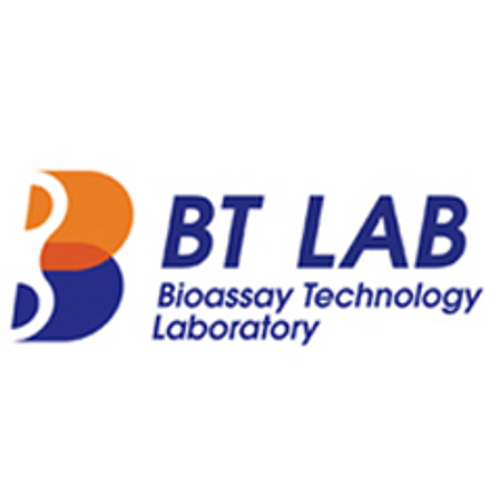Product Description
Human Podocalyxin-like protein 2 (PODXL2) ELISA Kit | AE26754HU | Abebio
Species Reactivity: Human (Homo sapiens)
Abbreviation: PODXL2
Alternative Name: PODLX2; endoglycan
Application: ELISA
Range: 1.56-100 ng/mL
Sensitivity: 0.59 ng/mL
Intra-Assay: ≤4.4%
Inter-Assay: ≤8.3%
Recovery: 1, 02
Sample Type: Serum, Plasma, Other biological fluids
Detection Method: Sandwich
Analysis Method : Quantitive
Test Principale: This assay employs a two-site sandwich ELISA to quantitate PODXL2 in samples. An antibody specific for PODXL2 has been pre-coated onto a microplate. Standards and samples are pipetted into the wells and anyPODXL2 present is bound by the immobilized antibody. After removing any unbound substances, a biotin-conjugated antibody specific for PODXL2 is added to the wells. After washing, Streptavidin conjugated Horseradish Peroxidase (HRP) is added to the wells. Following a wash to remove any unbound avidin-enzyme reagent, a substrate solution is added to the wells and color develops in proportion to the amount of PODXL2 bound in the initial step. The color development is stopped and the intensity of the color is measured.
Product Overview: PODXL2, PLEXIN-D1, GATA-2, and TMCC1 are located within the smaller critical interval of the Pakistani HCFP family. Podocalyxin, a sialoglycoprotein, is thought to be the major constituent of the glycocalyx of podocytes. It coats the secondary foot processes of the podocytes. It is negatively charged and thus functions to keep adjacent foot processes separated, thereby keeping the urinary filtration barrier open.Podocytes are highly differentiated epithelial cells with interdigitating foot processes covering the outer aspect of the glomerular basement membrane. Other biological activities of the encoded protein include: binding in a membrane protein complex with Na+/H+ exchanger regulatory factor to intracellular cytoskeletal elements, playing a role in hematopoetic cell differentiation, and being expressed in vascular endothelium cells and binding to L-selectin.
Stability: The stability of ELISA kit is determined by the loss rate of activity. The loss rate of this kit is less than 5% within the expiration date under appropriate storage condition. The loss rate was determined by accelerated thermal degradation test. Keep the kit at 37°C for 4 and 7 days, and compare O.D.values of the kit kept at 37°C with that of at recommended temperature. (referring from China Biological Products Standard, which was calculated by the Arrhenius equation. For ELISA kit, 4 days storage at 37°C can be considered as 6 months at 2 - 8°C, which means 7 days at 37°C equaling 12 months at 2 - 8°C) .
 Euro
Euro
 USD
USD
 British Pound
British Pound
 NULL
NULL








